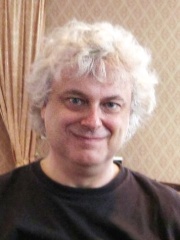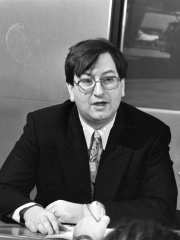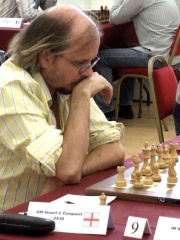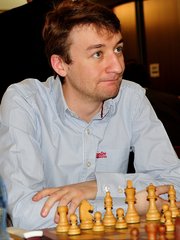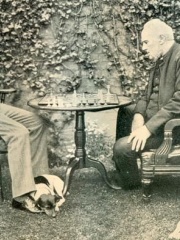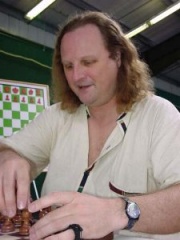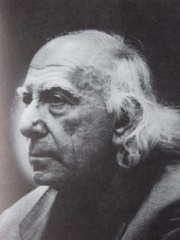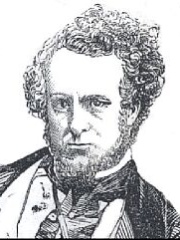


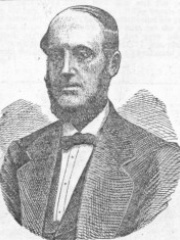
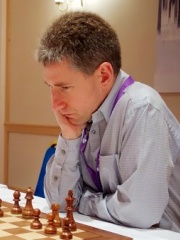
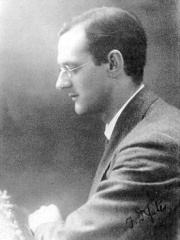
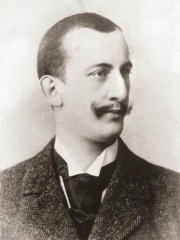
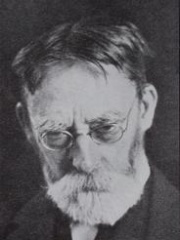
The Most Famous
CHESS PLAYERS from United Kingdom
This page contains a list of the greatest British Chess Players. The pantheon dataset contains 461 Chess Players, 18 of which were born in United Kingdom. This makes United Kingdom the birth place of the 8th most number of Chess Players behind India, and Poland.
Top 10
The following people are considered by Pantheon to be the top 10 most legendary British Chess Players of all time. This list of famous British Chess Players is sorted by HPI (Historical Popularity Index), a metric that aggregates information on a biography's online popularity. Visit the rankings page to view the entire list of British Chess Players.

1. Howard Staunton (1810 - 1874)
With an HPI of 71.97, Howard Staunton is the most famous British Chess Player. His biography has been translated into 35 different languages on wikipedia.
Howard Staunton (April 1810 – 22 June 1874) was an English chess master who is generally regarded as the world's strongest player from 1843 to 1851, largely as a result of his 1843 victory over Pierre Charles Fournier de Saint-Amant. He promoted a chess set of clearly distinguishable pieces of standardised shape – the Staunton pattern promulgated by Nathaniel Cooke – that is still the style required for competitions. He was the principal organiser of the first international chess tournament in 1851, which made England the world's leading chess centre and caused Adolf Anderssen to be recognised as the world's strongest player. From 1840 onwards he became a leading chess commentator, and won matches against top players of the 1840s. In 1847 he entered a parallel career as a Shakespearean scholar. Ill health and his two writing careers led him to give up competitive chess after 1851. In 1858 attempts were made to organise a match between Staunton and Paul Morphy, but it never came about. It was alleged by British Chess Association president Lord Lyttelton that Staunton misled Morphy while trying to avoid the match; it is also possible Staunton overestimated his chances of getting physically fit and of making time available for a match. Modern commentators consider Staunton's understanding of positional play to have been far ahead of his contemporaries. Although not a rampant attacking player, he attacked when his preparations were complete. His chess articles and books were widely read and encouraged the development of chess in the United Kingdom, and his Chess-Players' Handbook (1847) was a reference for decades. The chess openings the English Opening and Staunton Gambit were named for his advocacy of them. Staunton has been a controversial figure since his own time, and his chess writings could be spiteful. On the other hand, he maintained good working relationships with several strong players and influential chess enthusiasts, and demonstrated excellent management skills.

2. Alexander McDonnell (1798 - 1835)
With an HPI of 63.91, Alexander McDonnell is the 2nd most famous British Chess Player. His biography has been translated into 23 different languages.
Alexander McDonnell (1798–1835), sometimes spelled MacDonnell, was an Irish chess master, who contested a series of six matches with the world's leading chess player Louis-Charles Mahé de La Bourdonnais in 1834.

3. Nigel Short (b. 1965)
With an HPI of 63.78, Nigel Short is the 3rd most famous British Chess Player. His biography has been translated into 42 different languages.
Nigel David Short (born 1 June 1965) is an English chess grandmaster, columnist, coach and commentator who has been the FIDE Director for Chess Development since September 2022. Short earned the title of grandmaster at the age of 19 and was ranked third in the world by FIDE from July 1988 to July 1989. In 1993, he became the first English player to play a World Chess Championship match, when he qualified to play Garry Kasparov in the PCA world championship in London, where Kasparov won 12½ to 7½. He was appointed Member of the Order of the British Empire (MBE) in the 1999 Birthday Honours for services to chess.

4. Henry Bird (1830 - 1908)
With an HPI of 63.48, Henry Bird is the 4th most famous British Chess Player. His biography has been translated into 22 different languages.
Henry Edward Bird (14 July 1829 – 11 April 1908) was an English chess player, author and accountant. He wrote the books Chess History and Reminiscences and An Analysis of Railways in the United Kingdom. Although Bird was a practising accountant, not a professional chess player, it has been said that he "lived for chess, and would play anybody anywhere, any time, under any conditions."
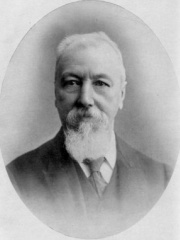
5. Joseph Henry Blackburne (1841 - 1924)
With an HPI of 62.39, Joseph Henry Blackburne is the 5th most famous British Chess Player. His biography has been translated into 26 different languages.
Joseph Henry Blackburne (10 December 1841 – 1 September 1924) was a British chess player. Nicknamed "The Black Death", he dominated the British scene during the latter part of the 19th century. Blackburne learned the game at the relatively late age of 17 or 18, but he quickly became a strong player and went on to develop a professional chess career that spanned over 50 years. At one point he was one of the world's leading players, with a string of tournament victories behind him, and popularised chess by giving simultaneous and blindfold displays around the country. Blackburne also published a collection of his own games.

6. Michael Adams (b. 1971)
With an HPI of 61.57, Michael Adams is the 6th most famous British Chess Player. His biography has been translated into 43 different languages.
Michael Adams (born 17 November 1971) is an English chess grandmaster and the reigning nine-time British Chess Champion. His highest ranking is world No. 4, achieved several times from October 2000 to October 2002. His peak Elo rating is 2761, the highest achieved by an English chess player. Several times a World Championship Candidate, he reached the semifinals in 1997, 1999 and 2000. He reached the final at the 2004 FIDE Championship, narrowly losing out to Rustam Kasimdzhanov in the tie-break games. Adams won the World Senior Chess Championship (Over-50 category) in 2023.

7. Fred Yates (1884 - 1932)
With an HPI of 56.96, Fred Yates is the 7th most famous British Chess Player. His biography has been translated into 15 different languages.
Fred Dewhirst Yates (16 January 1884, Birstall – 11 November 1932, London) was an English chess master who won the British Chess Championship on six occasions. He started a career in accountancy, but in 1909, abandoned it in favour of becoming a professional chess player and journalist.

8. Horatio Caro (1862 - 1920)
With an HPI of 54.91, Horatio Caro is the 8th most famous British Chess Player. His biography has been translated into 16 different languages.
Horatio Caro (5 July 1862 – 15 December 1920) was an English-German chess player, of world-class Master strength for about a decade, from the late 1880s to the late 1890s, a frequent winner of significant German events. He was a regular competitor for 30 years in Master events. Caro is principally known as the co-inventor of the Caro–Kann Defence, a heretofore virtually unknown opening variation, which he analyzed, published, and played from the mid 1880s. Caro was born in Newcastle upon Tyne, England, but spent most of his chess career in Berlin, Germany, having moved there when he was two years old.

9. Amos Burn (1848 - 1925)
With an HPI of 53.65, Amos Burn is the 9th most famous British Chess Player. His biography has been translated into 16 different languages.
Amos Burn (31 December 1848 – 25 November 1925) was an English chess player, one of the world's leading players at the end of the 19th century, and a chess writer. Burn was born on New Year's Eve, 1848, in Hull. As a teenager he moved to Liverpool, becoming apprenticed to a firm of shipowners and merchants. He learned chess only at the relatively late age of 16. He later took chess lessons from future World Champion Wilhelm Steinitz in London, and, like his teacher, became known for his superior defensive ability. Aron Nimzowitsch, in his book The Praxis of My System, named Burn one of the world's six greatest defensive players. Although never a professional chess player, Burn had a long career of playing tournaments and writing. In 1913, Leopold Hoffer, the editor for over 30 years of the chess column in The Field, the leading chess column in Great Britain, died. The proprietors of The Field took seven weeks to select a successor, finally settling on Burn. He moved to London and wrote the column until his death in 1925 from a stroke.
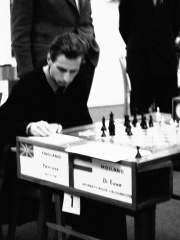
10. Jonathan Penrose (1933 - 2021)
With an HPI of 53.30, Jonathan Penrose is the 10th most famous British Chess Player. His biography has been translated into 17 different languages.
Jonathan Penrose, (7 October 1933 – 30 November 2021) was an English chess player, who held the titles Grandmaster (1993) and International Correspondence Chess Grandmaster (1983). He won the British Chess Championship ten times between 1958 and 1969.
People
Pantheon has 18 people classified as British chess players born between 1798 and 1984. Of these 18, 7 (38.89%) of them are still alive today. The most famous living British chess players include Nigel Short, Michael Adams, and John Nunn. The most famous deceased British chess players include Howard Staunton, Alexander McDonnell, and Henry Bird. As of April 2024, 2 new British chess players have been added to Pantheon including Jovanka Houska, and Luke McShane.
Living British Chess Players
Go to all RankingsNigel Short
1965 - Present
HPI: 63.78
Michael Adams
1971 - Present
HPI: 61.57
John Nunn
1955 - Present
HPI: 52.13
Raymond Keene
1948 - Present
HPI: 48.94
Stuart Conquest
1967 - Present
HPI: 42.07
Jovanka Houska
1980 - Present
HPI: 33.49
Luke McShane
1984 - Present
HPI: 33.45
Deceased British Chess Players
Go to all RankingsHoward Staunton
1810 - 1874
HPI: 71.97
Alexander McDonnell
1798 - 1835
HPI: 63.91
Henry Bird
1830 - 1908
HPI: 63.48
Joseph Henry Blackburne
1841 - 1924
HPI: 62.39
Fred Yates
1884 - 1932
HPI: 56.96
Horatio Caro
1862 - 1920
HPI: 54.91
Amos Burn
1848 - 1925
HPI: 53.65
Jonathan Penrose
1933 - 2021
HPI: 53.30
John Owen
1827 - 1901
HPI: 52.35
Tony Miles
1955 - 2001
HPI: 51.91
Harry Golombek
1911 - 1995
HPI: 49.43
Newly Added British Chess Players (2025)
Go to all RankingsOverlapping Lives
Which Chess Players were alive at the same time? This visualization shows the lifespans of the 10 most globally memorable Chess Players since 1700.

